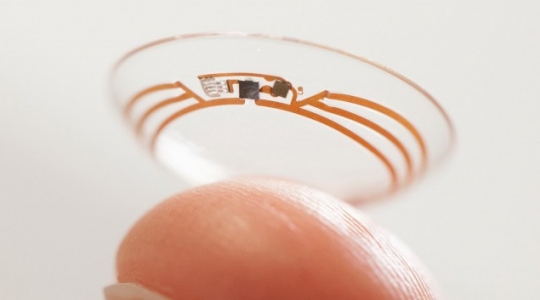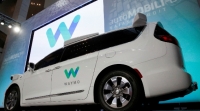Google’s getting more and more fascinated with biometric security measures. According to a recent patent filing, the Mountain View, California search engine giant is looking to integrate fingerprint authentication into its latest Android M update that will arrive this Fall. In addition to Google’s mobile efforts, the company has also been flirting with the idea of smart glasses (a la Glass) as well as smart contact lenses with an integrated camera for those who’d rather not bring too much attention to themselves.
Google also aims to design smart biometric technology to aid the health of humanity with its smart contact lenses, which can detect blood sugar levels via tear ducts. But the company also sees technology in a broader light, including security. To this end, Google’s latest patent shows it’s moving toward more secure forms of biometric identification – and iris fingerprints are more difficult for a hacker to “lift” than hand fingerprints.
The patent, dated June 2, 2015, covers a smart contact lens and a circuit containing light sensors (situated slightly over the iris) that scan the eye to form an “iris fingerprint” of an individual. The iris fingerprint detected by the light sensors would then be compared with an iris fingerprint on a computing device (whether desktop, mobile, etc.) for user authentication for a website or account, for example. As with prior smart contacts patents, the iris fingerprint detection system presented here would also call for a wireless power source of some kind.
In line with its commitment to user identification and internet security, Google says that “users can opt out of providing personal information” with an iris fingerprint detection system, and that data could be “anonymized” while still safeguarding account users.
Smart contact lenses could serve a number of purposes beyond biometric identification and measuring blood glucose levels. For one, smart contact lenses could also deliver medication doses over time (say, each hour or two), instead of requiring patients to take large medication doses at once. Night vision would be another benefit of smart contact lenses — a huge help for those who have trouble seeing at night, such as the visually impaired. And tear ducts contain an ingredient called lacryglobin that detects various cancers (breast, lung, brain, and so on), so smart contact lenses could help doctors and patients detect early, troubling signs or monitor for remission.
Google is but one of a few entities working on the future of contact lens technology: Swiss company Sensimed wants to use smart lenses to measure ocular inflammation in glaucoma patients; Seattle, Washington company Innovega has its sights set on creating smart lenses that can handle high-resolution displays while not affecting user vision; and the University of Michigan wants to create infrared lenses that provide night vision.
While plenty of patents are filed that never come to fruition, Google’s interest in smart contact lenses seem to be growing, which explains why the company announced its new partnership with Swiss pharmaceutical company Novartis last year to begin the production of its smart contact lenses. Novartis CEO Joe Jimenez said that consumers can expect to see Google’s contact lenses on the market no earlier than 2019. Regardless of when the smart eyewear arrives to market, you can be sure that smart contact lenses will do more than just look fashionable.
Source: extremetech.com












